Gosford Park at 20: An Oral History of The Comedy of Manners, Money, and Murder
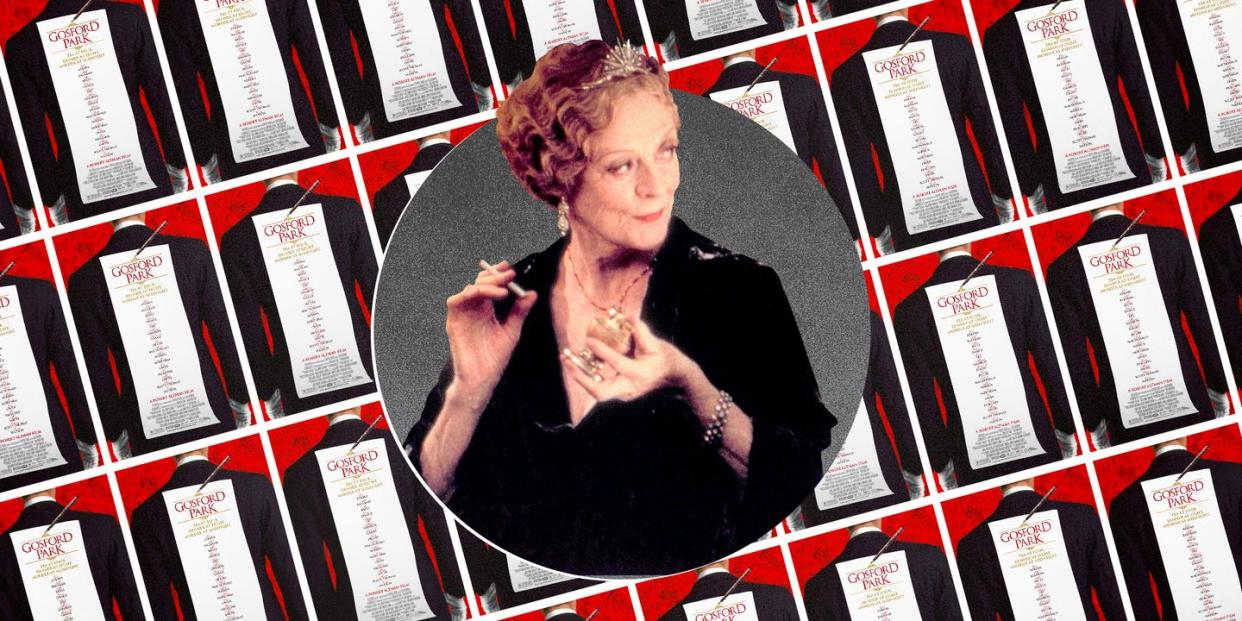
"Hearst Magazines and Yahoo may earn commission or revenue on some items through the links below."
It took a bit of magic, and no small amount of mischief, for Robert Altman to get Gosford Park to the screen. Twenty years after its release, the film is now beloved, a deliciously witty British country house murder mystery. Set during a shooting party in 1932, it is fraught with sex, snobbery, and duplicity, with an emotional jolt at the end. The privileged class upstairs includes Michael Gambon as a boorish tycoon, Kristin Scott Thomas as his aristocratic wife, who loathes him, and Maggie Smith as her haughty aunt, the Countess of Trentham. Below stairs are the servants, including Helen Mirren as the housekeeper, Eileen Atkins as the cook, and the late Alan Bates as the butler, all with secrets of their own. Add the house party’s guests, their servants, and a bumbling detective, and the story is rich with layers of drama and playfulness. But it’s a wonder Gosford Park ever got made.
As a director, Altman was revered for acerbic masterpieces like Nashville and M*A*S*H, not for genteel comedies, and he was coming off one of his commercial flops, Dr. T and the Women. His friend Bob Balaban approached him with a story idea and suggested an unknown screenwriter named Julian Fellowes. Now that Fellowes is famous as the creator of Downton Abbey—and the new HBO period drama The Gilded Age, premiering this month—that choice seems inspired, but at the time no one in Hollywood much wanted him or Altman or a mystery in which the murder doesn’t even happen until an hour and 20 minutes into the movie.
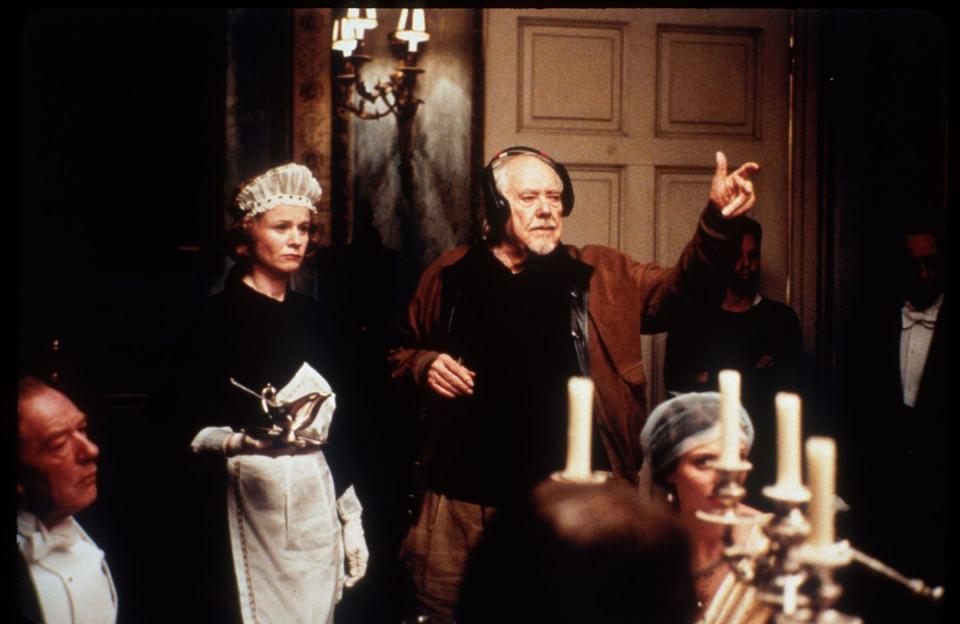
Altman, who died in 2006, could be a wizard, though. He wrangled a modest budget of around $19 million, cast more than 40 characters, put them in exquisitely detailed clothes and settings, and came out with a hit that earned seven Oscar nominations. The saga of Gosford Park’s creation is a comedy of errors all its own, as those who experienced it behind-the-scenes recall.
STEPHEN ALTMAN (Gosford production designer; son of Robert Altman): When I was eight or nine years old, Bob [Altman] was already talking about doing this murder mystery. He had a lot of these projects, and most of them never came to fruition. It wasn’t called Gosford Park, but he did want to do an English talkie and a murder mystery as well.
BOB BALABAN (played Morris Weissman and produced): I was sitting in my office in New York thinking, How can I stop waiting for the phone to ring to get a job as an actor? I happened to be reading Agatha Christie stories. I called Bob [Altman] and said, “I had this idea. It’s a story of a weekend in the country, maybe in the ’30s, it’s in London, a bunch of people get together. There’s a murder, and they solve it.” And Bob said, “I’ve never done anything in that genre, and I haven’t done much in England, so that makes it appealing, but I don’t like rich people being the heroes. What can you do about that?” And I said, “Why don’t we make Upstairs, Downstairs as a murder mystery?”
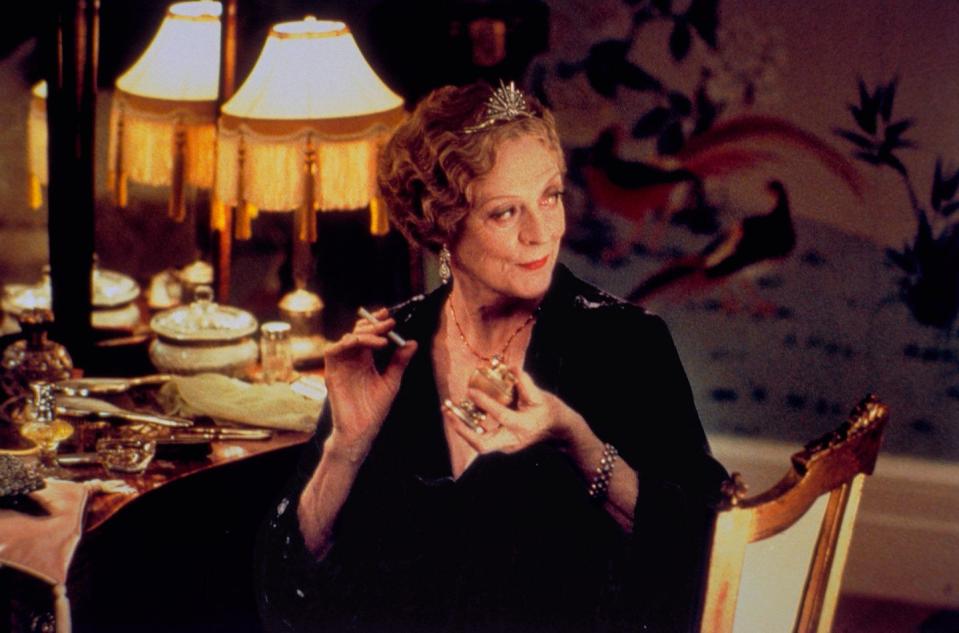
EILEEN ATKINS (Mrs. Croft; co-creator of Upstairs, Downstairs): Robert Altman asked Tom Stoppard to write the script. He said, “I want Upstairs, Downstairs meets Agatha Christie,” and Stoppard said, “Thank you very much, but that isn’t my kind of thing. Why don’t you ask the women who created Upstairs, Downstairs?” So Altman asked me and Jean Marsh to write the script. I didn’t want to do it, and Jean did, so I tried a bit for her. We did a storyline, but I hate flying and I wouldn’t fly out to see him, and he got a bit fed up with me. So he finally said, “Look, this isn’t working out.” And he went to Julian Fellowes.
JULIAN FELLOWES (screenwriter): I was asked out of the blue. Balaban rang me: Would I be interested in writing the script? I did the character synopses, and I did the notes, and then I did the first draft, but all the way through, I was very conscious that I was having to give it my best shot just in case it came off. I’d never written a film that had been made. It just seemed too wild that I was writing for this famous director, a film script that was outside his territory. He was the king of Americana, and suddenly we were there with Lady Sylvia worrying about whether or not the groom has the horse ready. The idea was an examination of English society before the war, and we would tell it through a house party. Bob [Altman] said to me, “This isn’t a whodunit, it’s a who cares whodunit.”
With only part of the budget in place, Altman, producer David Levy, and Stephen Altman settled into a London hotel to look for the last bits of financing. Many in the cast, including Smith, Atkins, and Bates, signed on early. Ryan Phillippe, who had just become a star in Cruel Intentions, was hired close to the start of filming as Henry Denton, an American actor posing as Weissman’s Scottish valet to research a role.
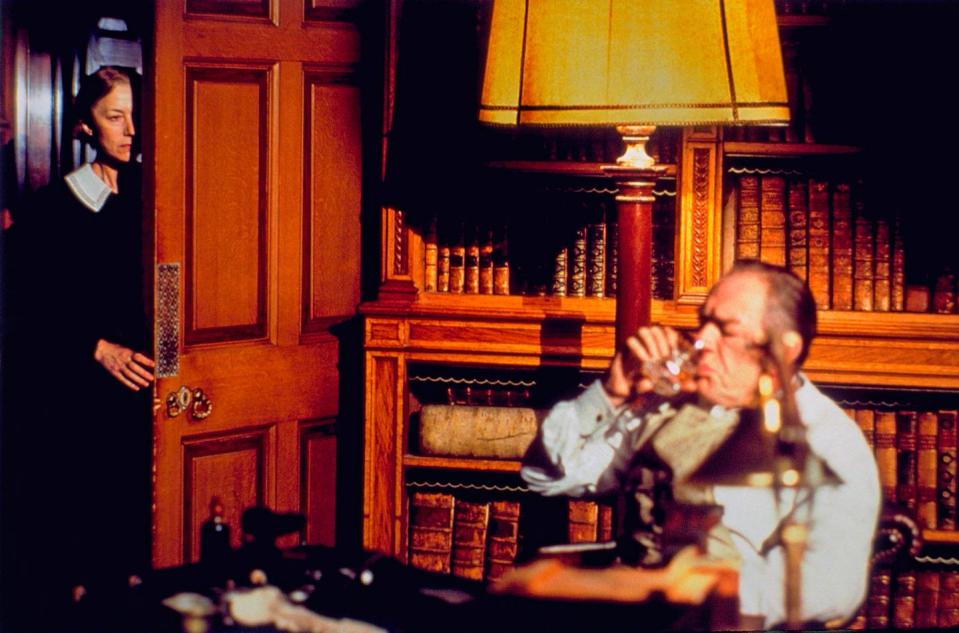
STEPHEN ALTMAN: We set up the office in the living room. I think Bob [Altman] called Maggie Smith up and said, “Hey, do you want to go out to dinner some night? I’m here in London doing this project.” And she said, “Yes, Bob, of course.” And then he called Michael Gambon and said, “Hey, can you meet me for dinner tonight? I got this project I want to talk to you about.” [At that point] there wasn’t really anything there. The typical Bob Altman movie scam until he got it together and it became not a scam.
ATKINS: I was doing a lovely play Off-Broadway with Alan Bates, and Bob Altman came backstage and went into Alan’s dressing room first—I could hear him talking and laughing. He asked Alan to be in Gosford Park. Then he walked into my room and said, “Well, will you be in the movie?” because I’d been so difficult about writing. And I said, “I’d love to.” He offered me Maggie’s part. I read the script and said, “I’d love to.” And then he called me a few days later and said, “Oh, I’ve changed my mind. Maggie Smith is playing that part and you’re going to play the housekeeper.” So I said, “Okay, fine.” Then a couple of weeks went by, and he called me and said, “Oh, Eileen, you’re not playing the housekeeper. I’ve got Helen Mirren for that part. You’re going to play the cook.” And I said, “Look, Bob. This is getting a bit silly. I’m too thin to be a cook.” And he said, “That’s the joke. I want you to look as thin as possible.” So I stayed as the cook. I didn’t get put any lower.
RYAN PHILLIPPE (Henry Denton): Jude Law was going to play my role. He was going to be pretending to be an American who was discovered to be British. He dropped out, and Gosford Park was about to fall apart because they needed that financing relevancy. Jude had more than I did, but I had enough to secure the financing if I took the role. So even though you’ve got these unbelievably pedigreed, knighted and damed actors and actresses, in the film market their value wasn’t enough. I’m a relatively small part of the movie, but at that point I was the piece they needed.
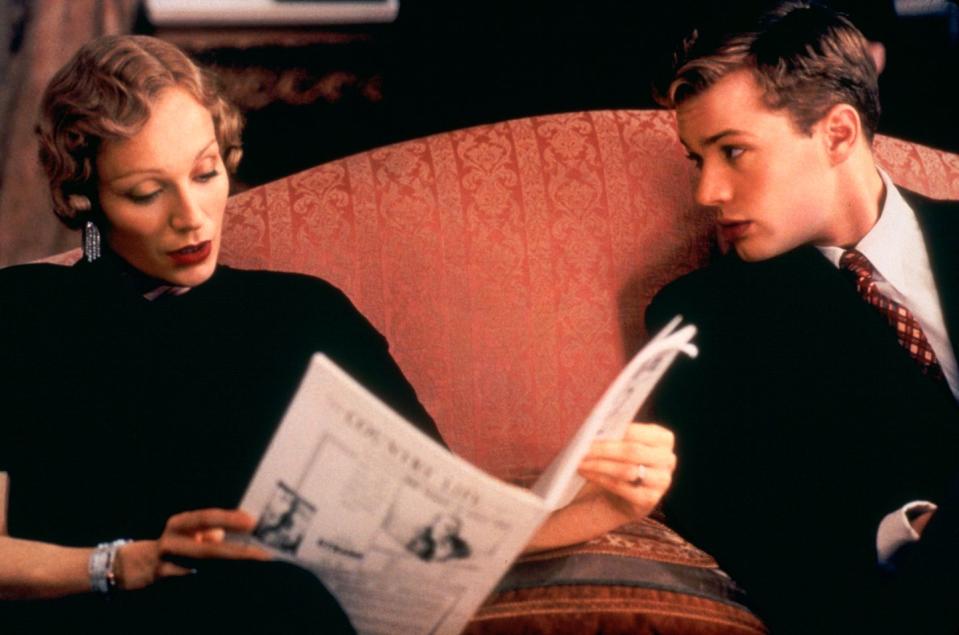
BALABAN: The cast was lied to, basically. We said, “Yes, we have all the money,” but we didn’t really have all the money. We were about to have all the money.
The sumptuous upstairs scenes were shot at several estates in the English countryside, including Wrotham Park, whose front entrance and grounds became the main exterior location. Fellowes was on set every day to make sure the details and dialogue remained historically accurate. Every actor wore a microphone so Altman could use improvised chatter in the background. Otherwise, the film was entirely scripted, except for a line Maggie Smith invented on the spot. Glancing at Claudie Blakley’s character, whose evening dress is not up to the aristocrats’ standards, the countess says with light-handed disdain, “Difficult color, green.”
STEPHEN ALTMAN: We combined exteriors, back yards, and some of the bedrooms of five different homes. The kitchens and the laundry rooms, these things didn’t exist anymore. After the ’30s there was no use for all those servants, so we recreated all those on a stage at Shepperton [Studios].
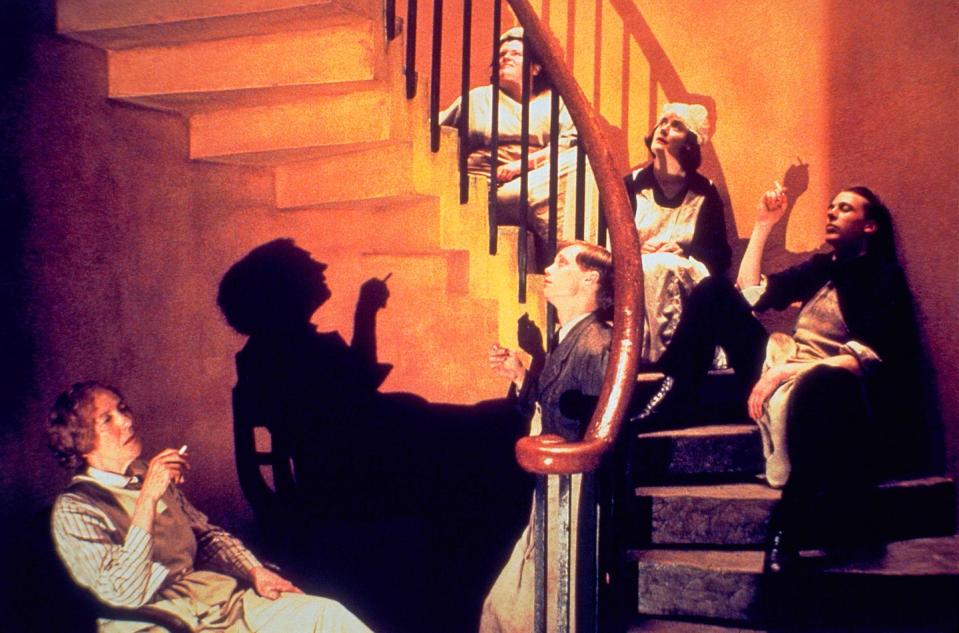
JENNY BEAVAN (costume designer): A lot of the costumes in Gosford Park are genuine vintage dresses. I remember learning that women brought a different dress for every single occasion, and the colors had to not be the same as anyone else’s. And then, of course, poor Claudie Blakley’s character brought only one frock. The green was a particularly dreary…let’s call it a common color. It wasn’t an expensive dress, and the lace on it was definitely not handmade. It was a nightmare because it kept disintegrating. We put together the Kristin Scott Thomas dress, which has a black collar. It was gently rotting around the top, so we gave it that extra piece, because it was bland but also to cover up the fact that it was rotting.
FELLOWES: Bob was aware that he was on foreign territory, and that allowed me, with his permission, a position of authority on the set that I would not otherwise have had. He didn’t want to get anything wrong, and when he made a mistake, he wanted it to be deliberate. It turned me into a sort of Monsieur Non figure. Whenever I said, “Bob,” there was a kind of a [Groans] feeling, because I was going to say, “She wouldn’t be in the dining room, she is a ladies maid.”
PHILLIPPE: At first I felt out of my depth with these esteemed actors. But some of the people in the cast were disarmingly cool, like Michael Gambon. I remember just hanging out with him, going to get lunch with him in his convertible. There’s certainly that reverence and respect you’re going to have for Maggie Smith, who incidentally would flirt with me occasionally. She’d say, “Ryan, come over and sit down next to me for a minute.” It was very sweet.

JEREMY SWIFT (Arthur, a footman): I remember Maggie Smith had a fox [neckpiece], with the head and everything. And she was sort of puppeteering it. She kind of brought it back to life almost.
FELLOWES: About three weeks after we’d started shooting, we were at Wrotham having lunch, and Bob called me over and said, “Look over there.” I did, and there was Helen Mirren talking to Eileen Atkins. He said, “Don’t they look similar? This afternoon we’ll make them sisters.” So I had to go back and look at every scene we’d shot with them, and every scene we had coming up, and devise how they could be sisters.
ATKINS: Helen and I were sitting having lunch, and Robert Altman came over to us and said, “I decided that you two are sisters.” We said, “What?” We’d been shooting for weeks, and we’d not known we’re sisters. And he said, “That doesn’t matter. There’ll be a story to cover that.” Sometime after—I honestly don’t know whether it was days or a week—he said, “I want you two to come in very early tomorrow morning. I want you to be on the set by 5:30.” Helen and I got there, and there was just Bob and the camera crew. No Julian. He said, “I want you two to improvise something.” Neither of us wanted to do it, but he said, “Just do something.” We made up some rubbish, and we’d only got a few lines out and Julian turned up very, very angry on the set. I don’t think anything of what we’d improvised was actually used.
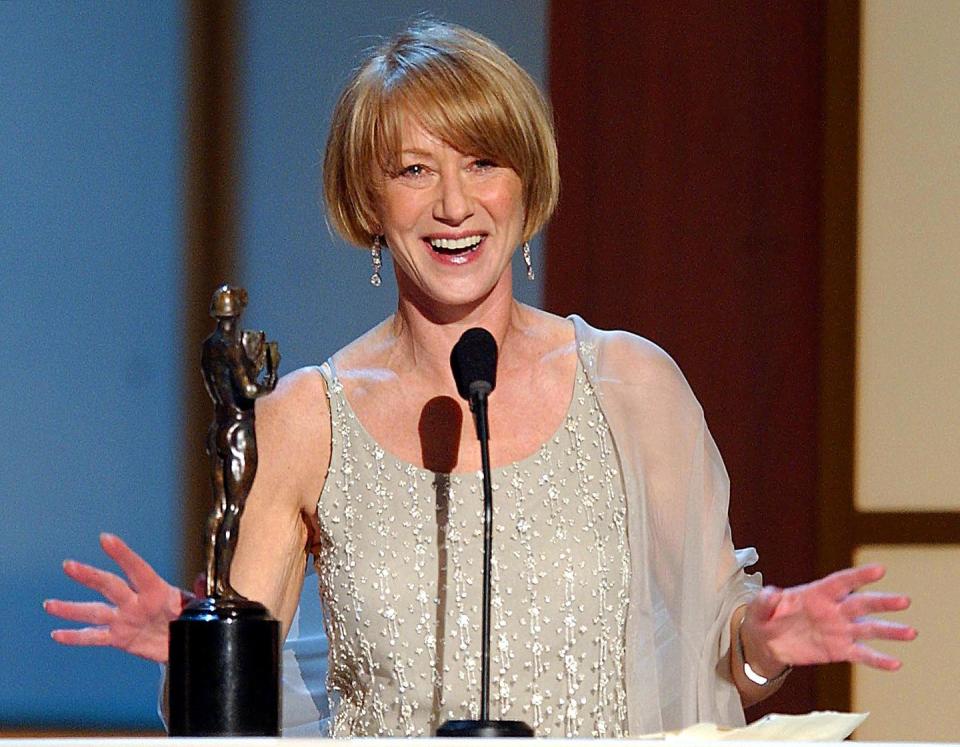
ROBERT ALTMAN (in a 2002 interview): Without this last scene between Helen Mirren and Eileen Atkins…I don’t think this picture would be enjoying the kind of success that it seems to be now.
SWIFT: Altman was insistent, and this is Altmanesque, about people talking over each other. There was one exterior scene where there was a little dinner party during the pheasant shoot. He said, “If you’ve got any other old lines from other movies, just chuck them in there.” Julian was behind him, completely aghast.
PHILLIPPE: You didn’t know when you were on camera necessarily. There were times when it felt like a reenactment or like getting in a time machine.
BEAVAN: I remember not wanting it to stop, because I loved doing it so much. My memory of the shooting is Jeremy Swift running down the stairs [after the dog], and he did the most extraordinary run and there was a sort of stunned silence. And then Robert Altman turned to him and said, “Jeremy, were you a cartoon character in a former life?”
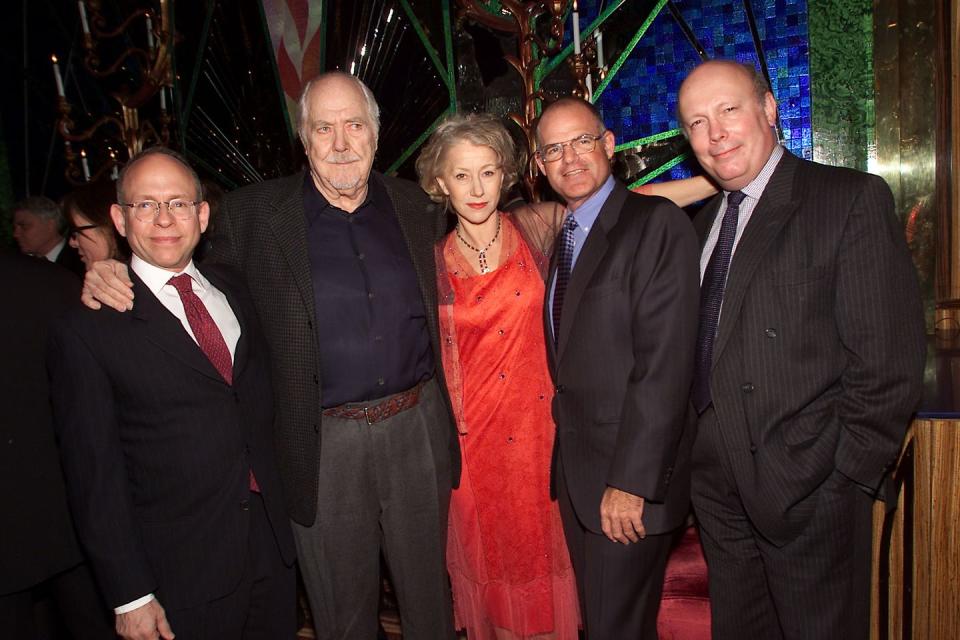
The day after Christmas 2001, Gosford Park opened in two theaters to sellout audiences and was on its way. Its Academy Award nominations included best picture, director, costume design, production design, and supporting actress for Smith and Mirren, but Fellowes was the only Oscar winner, for original screenplay. Altman himself was shrewd about the movie’s layers and lasting appeal. On first viewing, you’re trying to spot the murderer through all the red herrings, he says on the DVD commentary. On repeated viewings, “You see an entirely different film.”
BALABAN: Everything people love about Downton Abbey, they loved originally about this group. The intricacies of the characters, the dialogue Julian writes, people talking and talking about the infinite amount of snubbings and not snubbings, who’s in love and who’s not in love.
FELLOWES: Gosford made me a player. After that I was in the game at a fairly senior level, when before I hadn’t been in the game at all. I watched it a couple of months ago for the first time in about four or five years, and I thought, When I’m dead and someone watches this film as an example of what I did, I’m glad to be judged on it.
This story appears in the February 2022 issue of Town & Country.
SUBSCRIBE NOW
You Might Also Like
